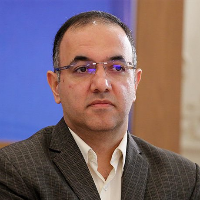The role of spatial organization indicators on the degree of sociability, with emphasis on physical-functional factors in mosques in Qazvin
The functional quality of the mosque space organization is very important due to its collective nature. Mosques, as a kind of collective camps with a high potential for socialization in order to harmonize worship, educational and cultural activities; They create a hierarchy of behavioral and activity systems. Today, due to changes in the urban structure, we can see an increase in the formation of mosques with a class structure or a plan with the principles of minimalism in the city of Qazvin. The desired and permanent connection between the space and the audience in these mosques is not established and fulfilled.Whereas the physical factor is one of the determining factors in the sociability of the mosque space and the functional component occurs in the light of the physical component; Therefore, the basis for the formation of many functions, especially social function in the place owes to the effects of the above two factors. The purpose of the research; Assessing the degree of sociability in mosques and the factors affecting its social quality by prioritizing physical and functional components in mosques in Qazvin. In this study, both quantitative and qualitative methods have been used in data collection. First, with the help of descriptive-analytical research method, using library resources, scientific articles and recording events with field techniques, information was collected, then by comparative analysis and logical reasoning, the social structure of mosques was evaluated. Spatial configuration and the composition of the distribution of spaces are the main factors in the pattern of voluntary and social activities in mosques. In order to explain the role of some dynamic physical factors and collective functions, the correlation method and a questionnaire were used. According to the previous explanations, the sample population in the selected mosques distributed 120 questionnaires among the audience and 98 questionnaires were filled by them. The aggregated data set provides a comprehensive picture of case studies focusing on the impact of features related to the configuration and type of organization of intermediate spaces, their arrangement and proportions, and performance variation. Therefore, the mosques of the measured neighborhood, Imam Hassan Askari (AS) and Javadalaimah (AS) have been purposefully selected.The results indicate that static and dynamic physical factors such as; Distribution, configuration, spatial hierarchy, and environmental comfort, along with activity factors, are effective in social cohesion, number of visits, duration of user presence, and consequently socialization of the mosque environment. Therefore, the two factors of body and function in the spatial organization of mosques, to meet the needs of users and their expectations in creating diverse areas of behavior - collective spaces for the need to interact or provide privacy - play an important role and can be considered by any The components in the design took steps to promote a sense of dynamism and satisfaction as a result of the presence of the audience in public places such as mosques.configuration, spatial hierarchy, and environmental comfort, along with activity factors, are influential in the sociability of the mosque environment.
-
Reading the Physical Structure of Mosques on How to Perceive, Behave and Measure Audience Attendance
MAHSA MIRSALAMI*, ALI OMRANIPOUR, SARA SHAREATI
Journal of Islamic Architecture Research, -
Investigating the role of Intermediate Spaces in the Mass-Space System and how it Affects the Organization of Collective Performance (Case Study in the Middle Areas of Qazvin Mosques )
Mahsa Mirsalami *,
Journal of Environmental Sciences and Technology,



